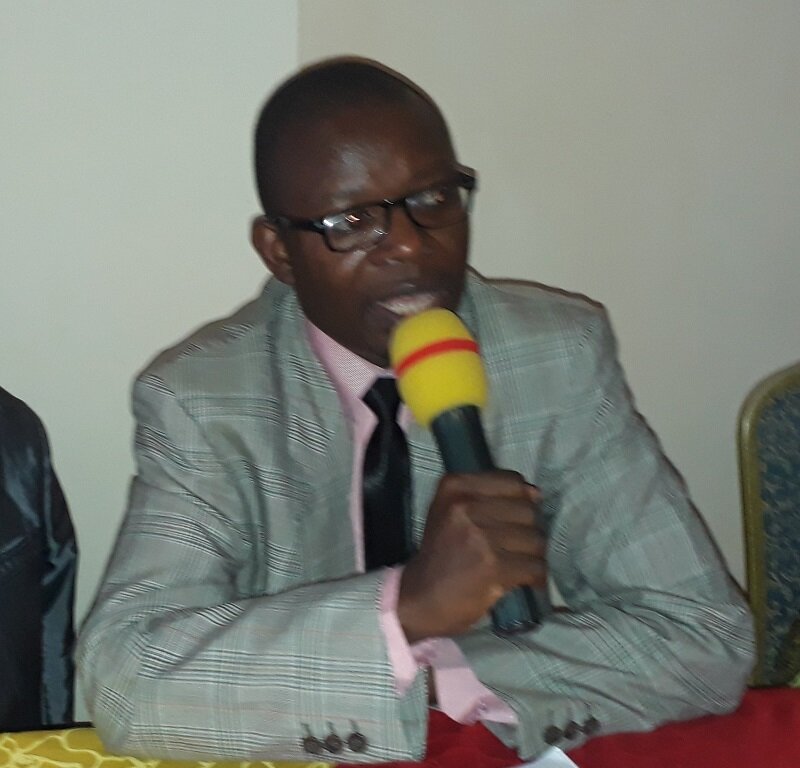 BUJUMBURA March 5th (ABP) – The Customs Union within the East African Community (EAC) is in its final stage of “Single Customs Territory”, according to Mr. Jean Pierre Bacanamwo, Interim Director General in charge of infrastructure and economic affairs at the Burundian Ministry in charge of the East African community.
BUJUMBURA March 5th (ABP) – The Customs Union within the East African Community (EAC) is in its final stage of “Single Customs Territory”, according to Mr. Jean Pierre Bacanamwo, Interim Director General in charge of infrastructure and economic affairs at the Burundian Ministry in charge of the East African community.
Mr. Bacanamwo, speaking on Thursday during a workshop to sensitize journalists on the process of integration of Burundi into the community, said that, like other countries in the community, Burundi has set up infrastructure for the implementation of the Single Customs Territory at border posts, including single-stop border posts.
The Single Customs Territory has advantages for travelers, traders and governments, it was noted. Goods from countries outside EAC are controlled at the 1st port of entry (Mombassa, Dar-Es-Salam). Then the trucks are closed (using lead). It is forbidden to open the truck during the journey. It will be opened once arrived in the country of destination where the goods will be declared, cleared and consumed. Customs charges are thus collected by the country of destination of the goods.
The Burundi Revenue Authority (OBR) has representatives in the ports of entry of Mombasa (Kenya) and Dar-Es-Salam (Tanzania) to monitor goods destined for Burundi.
Since July 2009, the same common external tariff has been applied for goods coming from countries outside the EAC (CET-common external tariff). Those that are already cleared in one country of the community cannot pay other entry fees when they are sold in the countries of the community. But other taxes such as VAT must be paid. Goods from EAC member countries do not pay entrance fees.
The Single Customs Territory has sharply reduced the tariff stages for goods from non-EAC countries from eleven to seven. The time allotted to transporting goods from the port of entry has also decreased because the trucks do not stop on the way to undergo checks. The security of the goods is ensured with a system for tracking the movement of trucks from the port of entry to the country of destination. The Single Customs Territory allows free movement of goods within the community.
Some challenges remain, however, according to Bacanamwo. Some services continue to put roadside barriers (central and northern corridors) in place to levy taxes that are not provided for by the community on transit goods. Corruption persists even though it has decreased. The community is experiencing a weakness in the interconnectivity of customs systems. In some places, the payment of taxes takes longer because of unsuitable techniques.
A national committee for the elimination of non-tariff barriers was set up in 2008 by the 2nd Deputy President of Burundi to eliminate those obstacles.
Since its creation in 2009, the committee has already eliminated 164 obstacles. One example is the resolution of the sale in Tanzania of BRARUDI drinks (brewery and lemonade processing of Burundi) while Tanzania opposed it because of the French language notices that the Tanzanian agents would not master.
Harmonization has been made in the amount paid by the trucks passing on Tanzanian and Burundian soil. Previously, every Burundian truck entering Tanzania paid $ 500 when Burundi charged Tanzanian trucks $ 152.
Burundi no longer charges transit fees for trucks from EAC countries in transit in Burundi.
The slowness on the border posts, especially in Kobero has been corrected. Working hours have been harmonized at border posts. Burundi and Tanzania have set the same opening hours despite the jet lag, said Bacanamwo.
Burundi has been a member of the Customs Union since 2009 and has been in force since 2005 in other countries.
The six member countries of the East African Community are Burundi, Kenya, Uganda, Rwanda, South Sudan and Tanzania.





